Send a WhatsApp!

Send a WhatsApp!



Diseases
I offer treatment for pulmonary diseases.
Find out more about the different diseases by clicking on the icon.

Respiratory Tract Infection

Sleep Apnea

COPD
(Chronic Obstructive Lung Disease)

Asthma

Lung Cancer

Treatment to quit smoking

Intersticial Lung Disease
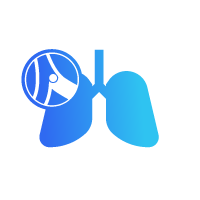
Pulmonary Embolism

Occupational disease

Pulmonary Hypertension

Pulmonary Abscess

Pleura

Respiratory Distress
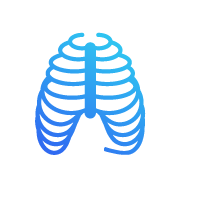
Pulmonary Damage Due to Thoracic Trauma
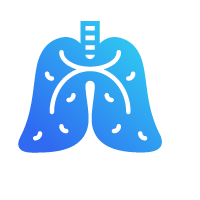
Tuberculosis
 Diseases
Respiratory Tract Infection
Diseases
Respiratory Tract Infection
Respiratory infections constitute a group of illnesses that are produced in the respiratory tract, caused by different microorganisms such as virus and bacteria, it happens abruptly and lasts 2 weeks.
Most infections are very common in the cold, but this depends on the person's immune system, they could have complications and the infection can become life threatening, such as pneumonia.
Warning Signs:
• safety measures: suffocation difficulty breathing dyspnea (difficulty breathing) chest pain.
• Chest pain when breathing or coughing.
• Excessive weakness or fatigue.
• Fever above 38 degrees C, over a 2 day period.
 Diseases
Sleep Apnea
Diseases
Sleep Apnea
Obstructive sleep apnea (OSA) is a problem which occurs when breathing stops while sleeping. This happens because the respiratory tract is reduced or blocked permanently.
Symptoms:
• If you have sleep apnea, normally you start to snore right after falling asleep.
• Often times, snoring gets louder and is paused by a long period of silence while your breathing stops.
• The silence is then filled by a hard bustle and agitation as you are trying to breathe. This cycle repeats all night long.
Complications
No-treated obstructive sleep apnea not treated can cause or worsen cardiovascular diseases, such as:
• Cardiac arrhythmia.
• Heart Failure.
• Heart Attack.
• Hypertension.
• Stroke.
 Diseases
COPD (Chronic Obstructive Lung Disease)
Diseases
COPD (Chronic Obstructive Lung Disease)
It is a chronic inflammatory lung disease that obstructs air flow to the lungs.
Symptoms:
The symptoms may include any of the following:
• Cough with or without phlegm.
• Fatigue.
• Difficulty breathing (dyspnea) which is worse with physical activity.
• Difficulty to catch breath.
• Wheezing.
Complications
It may present with other health problems such as:
• Irregular heart beats (arrhythmia).
• Necessity for a respirator and oxygen therapy.
• Right heart failure or cor pulmonale (inflammation of the heart and heart failure due to a chronic lung disease).
• Pneumonia.
• Pnemothorax.
• Considerable weight loss and malnutrition.
• Thinning of bones (osteoporosis).
• Weakness.
• Increased anxiety.
 Diseases
Asthma
Diseases
Asthma
The internal wall of the respiratory tract becomes inflamed and narrowed. This makes it very sensitive and easily reactive to irritants or allergens. When the respiratory tract has a reaction the airway is reduced and receives less oxygen
Symptoms:
• Wheezing.
• Cough, in the morning or night.
• Chest oppression.
• Shortness of breath.
Complications
• Death.
• Difficulty to exercise and take part in other activities.
• Lack of sleep because of symptoms at night.
• Permanent changes to pulmonary function.
• Persistent coughing.
• Difficulty to breath, requiring respiratory assistance (respirator).
 Diseases
Lung Cancer
Diseases
Lung Cancer
Symptoms:
The symptoms depend on what type of cancer you may have, but can include the following:
• Thoracic pain.
• Coughing that doesn’t go away.
• Coughing with blood.
• Fatigue.
• Involuntary weight loss.
• Loss of appetite.
• Difficulty breathing.
• Wheezing.
Treatment
The treatment guidelines for cancer depends on the type of cancer, how advanced it is and how healthy you are:
• Surgery to remove a tumor may be done as long as there is no extension past the lymph nodes.
• Chemotherapy uses medication to destroy the cancerous cells and stop growth of new cells.
• Radiotherapy uses potent x-rays and other forms of radiation to destroy the cancer cells.
 Diseases
Treatment to quit smoking
Diseases
Treatment to quit smoking
If you're like many smokers and tobacco users, you know you should quit, but you just aren't sure how to do it. Sure, going cold turkey on the spur of the moment may work for some people, but you'll improve your chances of success when you enlist the help of your health care team.
I provide top-quality, evidence-based care in a nonjudgmental and supportive manner to help you stop smoking. I work with you to develop an effective stop-smoking plan to enhance your motivation and the skills needed to quit when you're ready.
 Diseases
Intersticial Lung Disease
Diseases
Intersticial Lung Disease
Interstitial lung disease can be caused by constant exposure to dangerous substances such as asbestos. Some autoimmune illness, such as rheumatoid arthritis may produce interstitial pulmonary disease.
Symptoms:
Main signs and symptoms of interstitial lung disease:
• Difficulty breathing at rest or while moving.
• Dry cough.
Complications
• Pulmonary Hypertension.
• Right heart failure (Pulmonary cardiopathy).
• Respiratory failure.
 Diseases
Pulmonary Embolism
Diseases
Pulmonary Embolism
It is the obstruction of an artery in the lungs, caused by fat, air, blood clots or tumor cells.
Symptoms:
The main symptoms of a pulmonary embolism include acute chest pain that can be one of the following:
• Under the sternum, or next to it.
• Acute pain.
• Burning sensation, pain or heavy feeling.
• May worsen with deep breathing.
• It is possible you may change position such as bending over or holding your chest in response to the pain.
Treatment
Pulmonary embolism needs immediate treatment. It is possible you may need hospitalization:
• You will receive medications such as blood thinners will reduce the possibilities of producing blood clots.
• In severe pulmonary embolism, potentially mortal, treatment can implicate dissolving the blood clot. This is called thrombolytic therapy. You will receive medication to dissolve the clot.
 Diseases
Occupational disease
Diseases
Occupational disease
If you work in mining, farming or construction or for any reason are exposed to pollutants known to damage your lungs, your risk of lung disease is increased.
Symptoms:
• Shortness of breath at rest or aggravated by exertion.
• Cough.
Complications:
• High blood pressure in your lungs (pulmonary hypertension). Unlike systemic high blood pressure, this condition affects only the arteries in your lungs. Is a serious illness that becomes progressively worse.
• Right-sided heart failure (cor pulmonale). This serious condition occurs when your heart's lower right chamber (right ventricle) — which is less muscular than the left — has to pump harder than usual to move blood through obstructed pulmonary arteries.
• Respiratory failure. occurs when severely low blood oxygen levels along with rising pressures in the pulmonary arteries and the right ventricle cause heart failure.
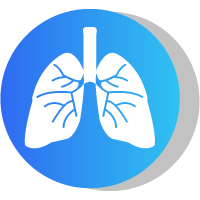 Diseases
Pulmonary Hypertension
Diseases
Pulmonary Hypertension
This is defined as high blood pressure in the lungs. This causes the right side of the heart to work harder than normal.
Symptoms:
Common symptoms are difficulty breathing or dizziness during activity is the first sign. Heart palpitations can also occur. With time, symptoms can worsen, presenting with the slightest activity or at rest.
Other symptoms include:
• Leg and ankle swelling.
• Blue lips or skin (cyanosis).
• Chest pain or Pressure.
• Episodes of vertigo or fainting.
• Fatigue.
• Increase abdominal volume.
• Weakness.
Treatment:
There is no cure for pulmonary hypertension. The objective of treatment is to control symptoms and prevent further lung damage. It is important to treat medical disease that causes hypertension, such as obstructive sleep apnea, lung disease and heart valve disorders.
 Diseases
Pulmonary Abscess
Diseases
Pulmonary Abscess
Pulmonary abscess is normally caused by bacteria inhaled into the interior of the lungs.
Warning Signs:
The symptoms usually start slowly. However, whichever the cause, the symptoms may present abruptly.
• Fatigue.
• Loss of Appetite.
• Night Sweats.
• Fever.
• Productive Cough with phlegm.
Treatment:
• The treatment requires administration of antibiotics. Initially, antibiotics should be administered intravenously in most cases, and later once the person has made significant improvement and the fever has disappeared, the treatment continues orally.
• This treatment should continue until all symptoms are gone and the chest X-ray shows the abscess has healed. Normally this takes 3-6 weeks of treatment with antibiotics, but a longer treatment period may be necessary.
 Diseases
Pleura
Diseases
Pleura
It is an accumulation of liquid in the layers of tissue that line the lung and the thoracic cavity.
Warning signs:
The symptoms can include any of the following:
• Thoracic pain, generally an acute pain that worsens with coughing of deep breathing.
• Cough.
• Fever and Chills.
• Hiccups.
• Accelerated breathing.
• Difficulty in breathing.
• Sometimes there are no symptoms.
Complications:
Complications of pleural effusion:
• Lung Dammage.
• Infection that grows called empyema.
• Air in the thoracic cavity (pneumothorax) after drainage.
• Pleural thickening (from scaring of the lung lining).
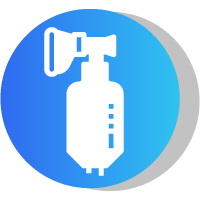 Diseases
Respiratory Distress
Diseases
Respiratory Distress
Respiratory Distress can involve:
• Difficult breathing.
• Shortness of Breath.
• Lack of air.
Causes:
Respiratory distress can also be caused by pulmonary problems, respiratory airway or other health problems.
Lung Problem:
• Blood Clots in Lung arteries (Pulmonary Embolism).
• Edema and mucus accumulation in the smallest respiratory airways.
• Chronic Obstructive Pulmonary Disease, COPD such as chronic bronchitis or emphysema.
• Pneumonia.
• High pressure in the pulmonary arteries (Pulmonary Hypertension).
• Other respiratory illness.
 Diseases
Pulmonary Damage Due to Thoracic Trauma
Diseases
Pulmonary Damage Due to Thoracic Trauma
A prolapsed Lung occurs when the air escapes from it; Then the same air goes into the space that is between the lung and the thoracic wall. This accumulation of air exerts pressure onto the lung, keeping it from expanding, as it should when breathing normally.
Symptoms:
The common symptoms or collapsed lung include:
• Thoracic pain or shoulder pain which worsens with deep breathing or coughing.
• Nasal flaring (from difficulty breathing).
A greater pneumothorax causes more symptoms, including:
• Blue tinted skin from the lack of oxygenation.
• Thoracic Oppression.
• Dizziness and Syncope.
• Tendency to fatigue.
• Accelerated heart rate.
• Shock and Colapse.
Complications:
The complications can include any of the following:
• Another pneumothorax in the future.
• Shock, if there are preexisting lesions or severe infection, severe inflammation or liquid present in the lungs.
 Diseases
Tuberculosis
Diseases
Tuberculosis
Symptoms:
Tuberculosis in respiratory tract can cause the following symptoms:
• Intense coughing for 3 or more weeks.
• Chest Pain.
• Coughing with blood or sputum (phlegm that comes from the base of the respiratory tract).
Other symptoms of tuberculosis include:
• Weakness or fatigue.
• Weight Loss.
• Loss of Appetite.
• Chills.
• Fever.
• Night sweats.
Complications:
• Milliar Tuberculosis. Its one of the more severe complications and frequent infirmary tuberculosis. It presents during the first 6 months after onset tuberculosis. It is characterized with fever, respiratory symptoms, and hepatosplenomegaly (enlargement of the liver and spleen) along with general symptoms, decreased energy and moderate or severe respiratory insufficiency.
• Pleural Effusion. This complication is present in 5-8% of patients with tuberculosis, mainly in preadolescent and adolescents and it is determined by the direct extension of a parenchymal lesion. The presentation of symptoms are insidious, generally acute, with high fever, thoracic pain that increases with movement.

